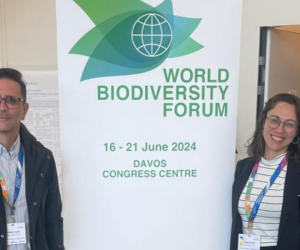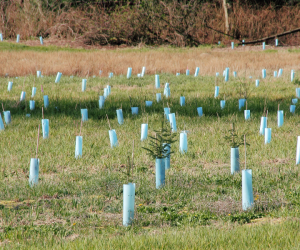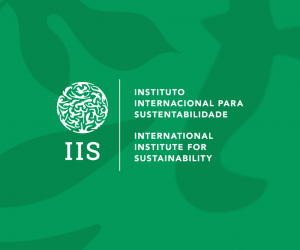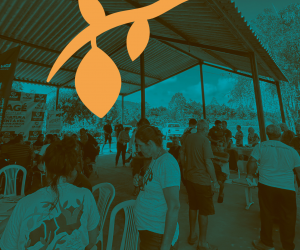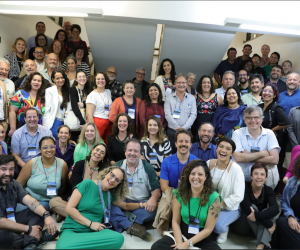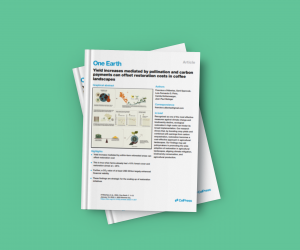News > News
21.12.20
Reforestation as a tool to combat desertification in northern Espírito Santo, says study
Forests and landscapes restoration and the legal adequacy of rural properties can improve water production and quality and strengthen water security in the Itaúnas and São Mateus river basins.
The restoration of more than 142 thousand hectares of areas that are currently degraded in the north of Espírito Santo is an opportunity to face the serious risks of drought and lack of water in the state, according to a new study released this Tuesday (15) by two local Hydrographic Basin Committees (CBHs), with the support of WRI Brasil and the International Institute for Sustainability (IIS).
The far north of Espírito Santo is mentioned in the National Action Program to Combat Desertification and Mitigate the Effects of Drought (PAN-Brazil). The high degree of degradation that leaves the soil susceptible to desertification results from decades of land occupation by pastures, monoculture of eucalyptus, sugar cane and fruit growing that have generated soil loss, erosion and silting of water courses. Only 15% of the region still has native forest cover.
The theme is so urgent in the region that it led the CBHs of the Itaúnas and São Mateus Rivers to create, in March 2020, their respective Forest Restoration Technical Chambers, with the objective of identifying partnerships and initiating restoration actions in both basins, participatory and dialogued with the local community, municipal governments, companies and society in general.
Good news is that this risk can be reduced by restoring landscapes and forests. This is the main conclusion of the study “Planning the Restoration of landscapes and forests of the Hydrographic Basins of the Itaúnas and São Mateus Rivers”. The work shows that 27 thousand hectares in the Itaúnas basin and 78 thousand hectares in the São Mateus basin can be restored in water Conservation Areas (APPs), in addition to approximately 50 thousand hectares that can be restored to adapt the Legal Reserve (RL) in the two basins.
According to Brazilian environmental legislation, APP areas have a fixed location in space, but RLs can be allocated within the landscape in an intelligent way, aiming to obtain the highest environmental returns at a lower cost, and avoiding conflicts with agricultural areas. “The study shows what are the priority areas for restoration in order to comply with the Forest Code, highlighting those that can bring the greatest benefits in terms of biodiversity conservation and mitigation of climate change, in places where restoration costs are lower . The results will help local actors to define the best way to reforest ”, says Juliana Almeida Rocha, from IIS, one of the authors of the study. In addition to the benefits cited by the author, restoration helps to maintain the water cycle, contributing to the formation of clouds and increased rainfall, as well as contributing to greater water infiltration into the soil, reducing erosion processes.
“Espírito Santo has one of the most successful Payments for Environmental Services (PES) programs in the country, Reflorestar. Stronger action by Reflorestar in the north of the state can help producers to adapt to the legislation and invest in restoration in order to increase water security ”, highlights Luciana Alves, from WRI Brasil, one of the authors of the study.
In addition to these essential environmental services, the study also proposes restoration modalities that generate income in a sustainable way for rural producers, such as the use of Agroforestry Systems (SAFs) and the Crop, Livestock and Forest Integration Systems (ILPF). “Identifying opportunities for local producers to restore, while improving the soil and water on their properties and generating income, is one of the ways to boost restoration in the Itaúnas and São Mateus basins”, says Marcia Lederman, from CBH Itaúnas.
There are about 2 billion hectares of degraded areas and forests worldwide that can benefit from public and private investments to recover their functionality and productivity. Coincidentally, 2 billion hectares is the area needed to meet the global demand for food and fiber by 2050. In the Paris Agreement, Brazil made a commitment to restore and reforest 12 million hectares of degraded areas and forests by 2030. The State do Espírito do Santo, in turn, committed itself to the restoration of 80 thousand hectares under the 20×20 Initiative, and has been working to expand the restoration actions and become a reference in native forestry in the country.
The UN declared 2021-2030 as the Decade of Restoration, yet another indication that the planet expects actions on a scale to face problems such as climate change and desertification, since forest restoration can be understood as an effective economic action to combat hunger and social inequalities.
About the study
The work was carried out through workshops with local actors, WRI Brasil and IIS, in the second half of 2020. There was an effective participation of various segments of society through river basin committees, rural producers, local companies, researchers and municipal and state governments. The workshops used as an basis an adaptation of the Methodology for Assessment of Restoration Opportunities (ROAM), a tool that allows identifying motivations for restoration, promoting the debate on the concepts and challenges of this agenda and pointing out ways to be followed for the scale gain of actions. A robust and reliable database was used to support the entire discussion, in addition to the adoption of advanced geoprocessing and analysis technologies. This new study includes the elaboration of the database, mapping opportunities for restoration of landscapes and forests, governance structures and actors in the region and spatial modeling to identify priority areas for restoration considering multiple benefits. Finally, it presents a proposal for an action plan structured on six main objectives, which unfold in several activities considered essential for its achievement. The plan considers short and medium term actions, with the premise of being constantly reassessed by CBHs for improvement.

